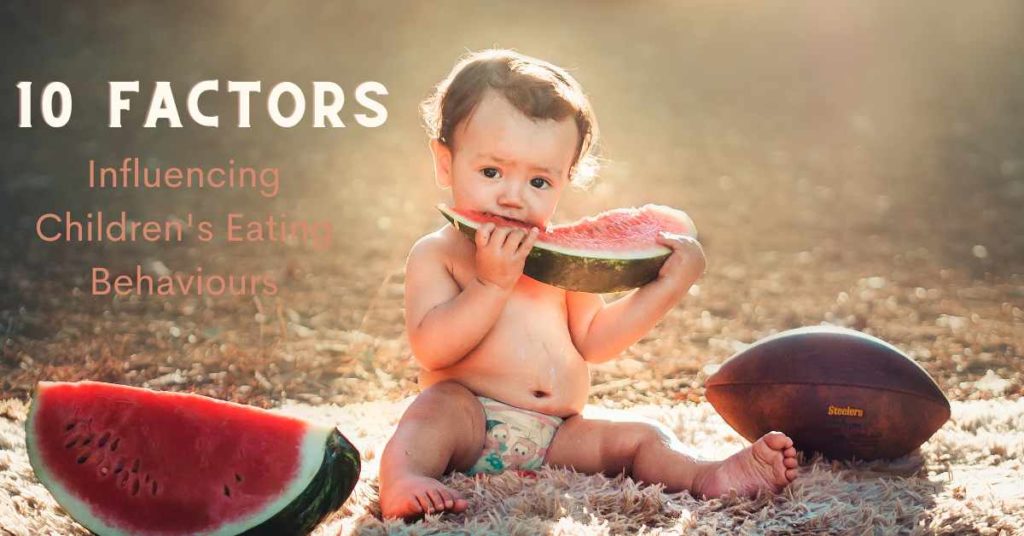Why is developing healthy habits in the child important?
General Recommendations about developing Healthy Eating Habits
- Family habits and attitudes toward food
- Nutritional knowledge and education
- Availability and accessibility of food
- Psychological factors (e.g., stress, emotions)
- Advertising and media exposure
- Parenting practices (e.g., feeding styles, involvement in meal preparation)
- Peers and peer pressure
- Biological factors (e.g., hunger and fullness cues, genetics)
- Cultural and social norms
- Health conditions and food allergies
“Child Health Creation” aims to prevent the development of diseases by providing Early Child Development programs and Parent education on How to grow a healthy child.
Early childhood is a critical stage of development that forms the foundation for children’s future well-being and learning.
In this article, you will read about the central part of the Health educational program: Nutritional knowledge and shaping healthy eating habits. How do family habits influence the formation of a child´s eating behavior?
Table of Contents
Healthy Eating and Eating Behaviours
First of all, what are the components of healthy eating behavior in children include:
- Drinking enough water, limiting sugary drinks, and eating various foods from all food groups in appropriate portions.
- Choosing nutrient-dense foods such as fruits, vegetables, whole grains, lean proteins, and low-fat dairy products.
- Limit foods high in added sugars, saturated fat, and salt.
- Eating regular meals and snacks at consistent times.
- Avoiding skipping meals.
- Eating in a calm and relaxed environment.
- Engaging in physical activity regularly.
- Listening to hunger and fullness cues.
- Being mindful and enjoying food without distractions (e.g., screen time).
- Involving children in meal planning, preparation, and cooking.
- Making healthy food choices in social and dining-out situations.
Nutritional knowledge and education in childhood play a crucial role in shaping healthy eating habits and food choices. It helps children to understand the importance of a balanced diet and how food affects their health and well-being. This education can be provided through various sources such as schools, family, health care providers, media, and community programs. It can also involve learning about different food groups, portion sizes, healthy food choices, and the effects of certain foods on the body. Children with a strong foundation of nutritional knowledge are more likely to make informed food choices and maintain healthy eating habits throughout their lives.
Nowadays, research shows us that the most critical factor in the creation of eating behaviors is family habits.
Relevant factors involved in creating some children’s food preferences and eating behaviors have been examined to manage children’s nutrition for preventive purposes. The family system surrounding a child’s domestic life will have an active role in establishing and promoting behaviors that will persist throughout life. Early-life experiences with various tastes and flavors have a role in promoting healthy eating in future life.
In the current analysis, parental food habits and feeding strategies are the dominant determinants of a child’s eating behavior and food choices. Parents are acting as positive role models. Prevention programs should be addressed to them, considering socioeconomic aspects and education. (Scaglioni S, De Cosmi V, Ciappolino V, Parazzini F, Brambilla P, Agostoni C. Factors Influencing Children’s Eating Behaviours. Nutrients. 2018 May 31;10(6):706. doi: 10.3390/nu10060706. PMID: 29857549; PMCID: PMC6024598).
Here I give parents some General Recommendations about developing Healthy eating habits from the moment of their child´s birth and within the first three years:
Mother’s milk is the only food to ensure a balanced development of the child in the first six months of life.
It contains not only all the nutrients necessary for a child in a perfectly balanced body but also a complex of biologically active substances.
Exclusive breastfeeding is the best way to feed a baby under 6 months of age.
Exclusive breastfeeding is breastfeeding with no other food or liquid in the diet. A child under six months should receive only breast milk; there is no physiological need to introduce additional fluid into his diet in the form of water, tea, juices, decoctions, and the like. Excluding cases of a child’s illness, when there is a loss of fluid from the body and fluid replacement is necessary.
Breastfeeding baby
Breastfeeding should begin within the first hour after birth and continue up to 1 year, and longer if possible.

- At the age of 6 months, it is necessary to introduce complementary foods, especially to meet the child’s needs in iron, and at the same time, continue breastfeeding.
- At the age of 6 months, breast milk remains the child’s main product, but it is necessary to expand the child’s diet and introduce additional products (complementary foods) into it.
Breast milk at the age of 6 months can no longer satisfy the child’s need for calories, and micronutrients, primarily iron, to ensure its normal development. Complementary foods are introduced in addition to breast milk in the first year of life.
- The introduction of complementary foods should be while continuing breastfeeding.
Complementary foods should be given when the child is active and hungry, preferably during breakfast or lunch.
Complementary foods are given after short breastfeeding (in the case of artificial feeding – a small amount of milk formula).
During feeding, the baby should be upright, comfortably on the mother’s arms or lap, or in a special high chair.
Complementary foods should be given to the child by placing a small amount of food on the tip of a teaspoon. Hold the spoon so that the child can see it. Then touch the child’s lips with a spoon so that part of the product remains on his lips. And only when the child opens his mouth should you put a spoonful of food in the middle of the tongue.
- In case of signs of poor tolerance of the complementary food product (disturbance of the function of the digestive system, allergic reactions, etc.), the introduction of this complementary food product should be stopped, and another one should be introduced.
- The first product of complementary foods can be cereals, vegetables, or fruit puree.
It is important to remember and understand that with the introduction of complementary foods, we begin to form the taste habits of our children, which subsequently has a significant impact on the formation of food preferences at an older age. As you know, formed habits are challenging to change. So let’s start healthy eating habits from the very beginning.
- Give preference to cereals that do not contain gluten (buckwheat, rice, corn).
A child at the age of 6 months must begin to receive complementary foods with a high iron content (Complementary foods high in iron: cereals, industrial production, enriched with iron; meat, fish, egg yolk).
Mother’s advice on safety during times of baby feeding
- Be sure to wash the hands of the mother and child before eating.
- Use clean water and utensils to prepare and serve the child’s food.
- Always be with the child when he eats; never leave him alone.
- Do not give your child solid foods in the form of small round objects (grapes, nuts, candy canes, etc.).
- Avoid sharp objects.
- Do not force the child to eat.
- Food should be cooled to body temperature (36-37°C).
- It is essential to understand that each child has an individual complementary feeding schedule regarding the rate of introducing different complementary foods.
- Complementary foods should only partially replace breastfeeding.
- Gradually, according to the child’s appetite, increase the amount and number of complementary foods introduced. A child under the age of 8 months should receive complementary foods three times a day. At the period of 9-11 months – 4 times a day.
- The importance of giving your child iron-fortified complementary foods.
- Avoid the same type of child’s diet.
- The importance of communicating with the baby during feeding. It is necessary to feed the child with other family members, to allow the child to provide for himself, and to be prepared for the mess that is an integral part of the learning process. Do not compare your child with others because healthy children do not look alike.
- The mother should know that stable indicators of weight gain are a reliable sign of the child’s normal development, and it depends on adequate healthy feeding.
- At the age of 1 year, the child should receive a variety of complementary foods from each food group and be able to drink from a cup. From about nine months old, the baby can pick up objects with the thumb and forefinger. It is necessary to offer your baby to keep small pieces of complementary foods during meals and feed himself with a spoon.
Basic principles of nutrition for a child aged 1-3 years
- Continue breastfeeding into the second year of life.
- The child’s diet should be varied and contain fresh vegetables and fruits daily.
- Low-fat varieties of meat, fish, liver, and eggs are recommended.
- Food should have soft, porridge-like consistency in the form of mashed potatoes, soufflés, meatballs, steamed cutlets, and finely chopped fruits and vegetables. With the appearance of teeth molars in children, food texture can be the same as in adults.
- Until two years, milk and dairy products in the diet should be of average fat content (3.2% or 3.5%), and for children over two years old, milk and dairy products with a reduced fat content are recommended.
- To prevent iodine deficiency in food preparation, iodized salt should be used.
- Food must be thoroughly cooked and given to the child no later than 30 minutes after preparation.
- The recommended number of feedings for a child is at least five times a day – 3 primary and two additional meals.

SUMMARY
Healthy habits in childhood are important because they:
- Lay the foundation for lifelong health and well-being;
- Promote physical growth and development;
- Reduce the risk of chronic diseases (e.g. obesity, type 2 diabetes, heart disease);
- Improve mental health and cognitive function;
- Foster healthy relationships with food and body image;
- Enhance the overall quality of life;
- Provide opportunities for children to learn and practice self-care skills;
- Create positive associations with food, physical activity, and healthy living.
If you liked this article, please share and leave your comment below.
If you want to learn more about raising a happy and healthy child, be sure to check out the author’s books and resources on this topic here.
Keywords: child food preferences; family meal; parental influences; breastfeeding, complementary foods, formation of healthy eating habits.





